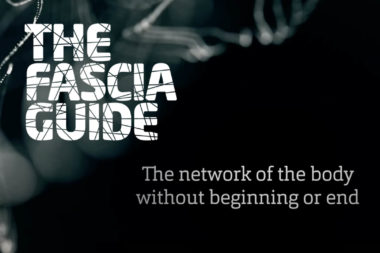

Why the Fascia is still relatively unknown?
Here are three major reasons why the Fascia’s central importance to the body’s functionality is not nousehold knowledge.
It might be helpful to bare these in mind when relating to current and previous research.
1. New field of research
Fascia research is no more than 40-50 years old; during a majority of that time it has been fragmented and disintegrated. What researchers in Germany found did not reach fellow researchers in the US, and so on. The first Fascia Research Congress was held in 2007, marking the beginning of the unification of ongoing research in the world. Atlasblans attended the fourth Fascia Research Congress in September 2015. A number of recorded interviews from that event can be found on this page.
2. Contradicts previous knowledge
These new research findings turn previous knowledge about the body upside down. Text books on anatomy speaks little about Fascia. If suddenly research pops up that claims “hey! Everything you learned during all the years you studied was based on the wrong perspective – you have missed one of the most central parts “it is not easy to accept that”.
3. New paradigm, new perspective
Some Fascia experts, like Tom Myers, believes, that the Fascia research will have the same groundbreaking impact on the paradigm shift for biology as the difference between Newtons’ mechanical universe and Ensteins’ e=mc2.
A bit pretentious, maybe, but in one way it is like hearing about Earth being round when you always have thought it to be flat. Old perspectives, beliefs and habits die hard. The new is often difficult to accept.
“For several hundred years, anatomists and surgeons like me have neglected this tissue (Fascia) since it does not seem to be something that is there. But the fact is that it is not just something – it is everything! “- Dr. Jean Claude Guimberteau
When we began to realize that the Fascia may have a function after all we began research. With new technologies such as ultrasound and cameras that can shoot live tissue under the skin the understanding of the Fascia’s function gradually increased – and with it a greater understanding of the body as a whole began to emerge.
Fascia is a network of connective tissue that envelops everything in the whole body, from muscles and bones to organs and cells. It is the “suit”, “body stocking” that keeps all parts of the body in place, which facilitates movement, posture, balance, and allows us to cope with the pressure of gravity.
Do we really have 600 muscles? Or is it one big muscle, a body stocking, with 600 pockets or bags of the Fascia?
The Fascia facilitates all communications between every single body part. There are 6 times more nerve receptors in the Fascia than in the muscles, Fascia exists in solid form, in liquid form (extra-cellular fluid) and communication in the Fascia is 15 times faster than in the nervous system.
This is where we have our entire intelligence, intuition and feeling, an extension of the brain, if you will – this is what makes the body one whole, and not a lot of parts.



















































